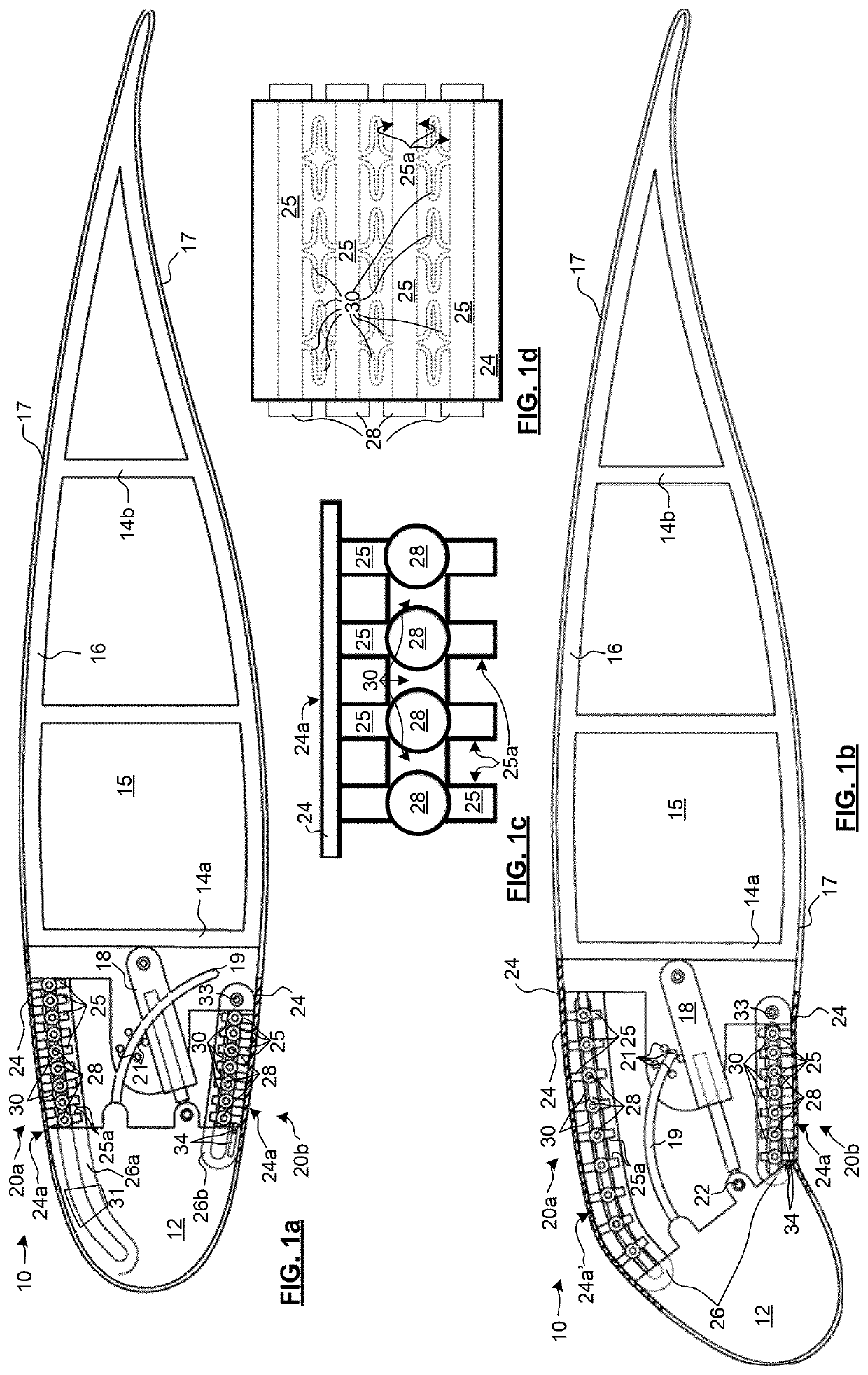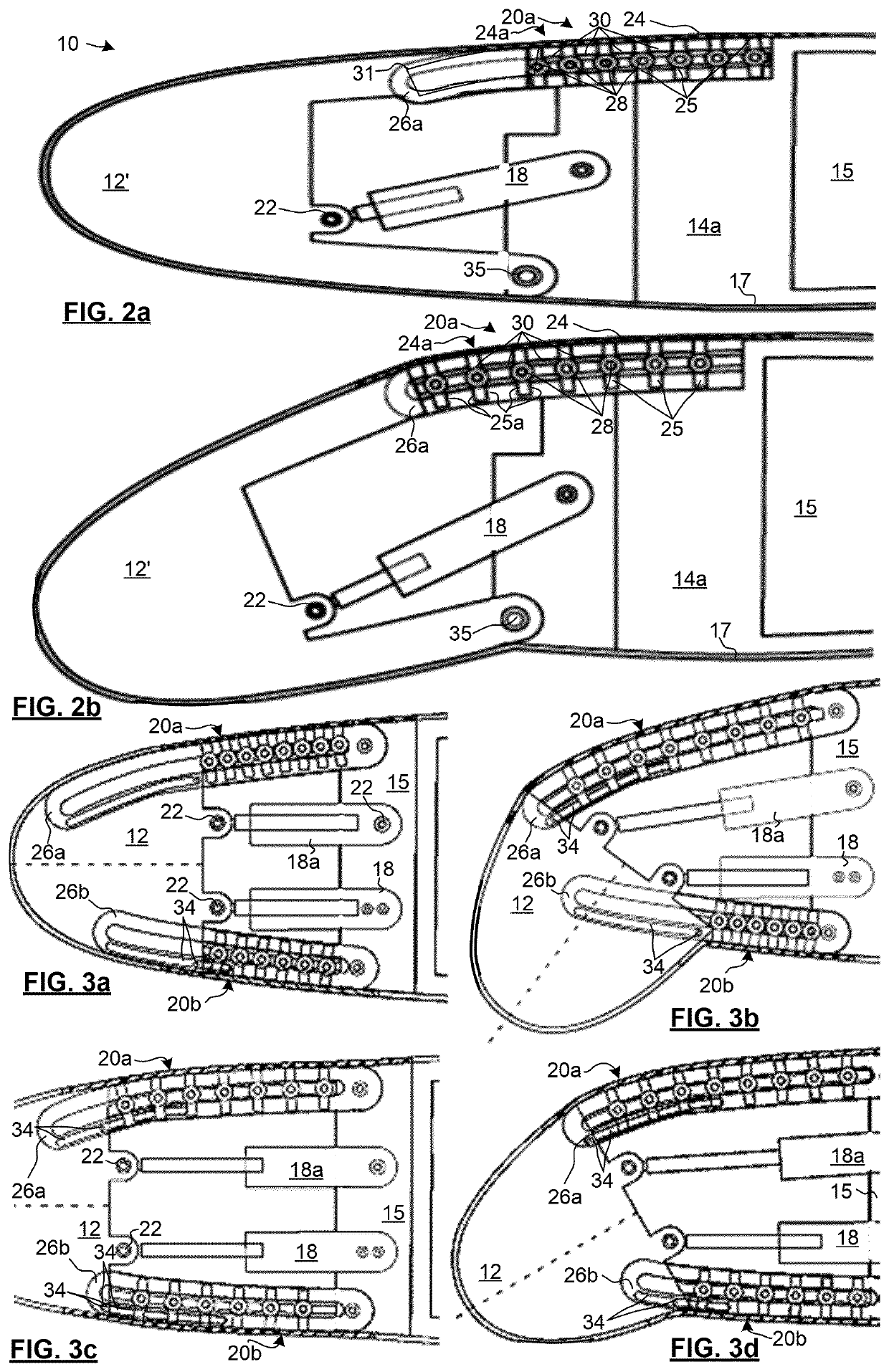Deforming foil structure for bridging curved fluid-dynamic surface
a fluid-dynamic surface and curved technology, applied in the direction of wing adjustment, etc., can solve the problems of linear deformation foils available to date, adopting the desired aerodynamic curvature, etc., and achieves the effect of reducing the number of deformation foils
- Summary
- Abstract
- Description
- Claims
- Application Information
AI Technical Summary
Benefits of technology
Problems solved by technology
Method used
Image
Examples
example
[0075]FIG. 7 is a side view of a 3-D printed bridging structure produced to test the present invention. The members 25 are substantially T shaped with an enlarged width at a bottom end thereof, and a small bifurcated tip for mounting to exposed ridges of an elastomeric sheet. The side view is of the sheet meeting a table on which it is resting.
[0076]The sheet was composed of E1040AL Urethane with 40 A Shore hardness. The ribbons and members were composed of LS Standard Nylon 12 GF with tensile modulus 2896 MPa-3585 MPa.
[0077]FIG. 8 shows the bridging structure from above. The ribbons are visible through the substantially transparent elastomeric sheet. To the left an enlargement is provided to facilitate view of the shapes of the resilient members, which are integrally formed with the members.
[0078]FIGS. 9a,b are images showing the bridging structure mounted to a test rig, in closed and opened poses. A rigid leading edge segment that corresponds to 12 in FIG. 1 is provided made of al...
PUM
 Login to View More
Login to View More Abstract
Description
Claims
Application Information
 Login to View More
Login to View More - R&D
- Intellectual Property
- Life Sciences
- Materials
- Tech Scout
- Unparalleled Data Quality
- Higher Quality Content
- 60% Fewer Hallucinations
Browse by: Latest US Patents, China's latest patents, Technical Efficacy Thesaurus, Application Domain, Technology Topic, Popular Technical Reports.
© 2025 PatSnap. All rights reserved.Legal|Privacy policy|Modern Slavery Act Transparency Statement|Sitemap|About US| Contact US: help@patsnap.com



